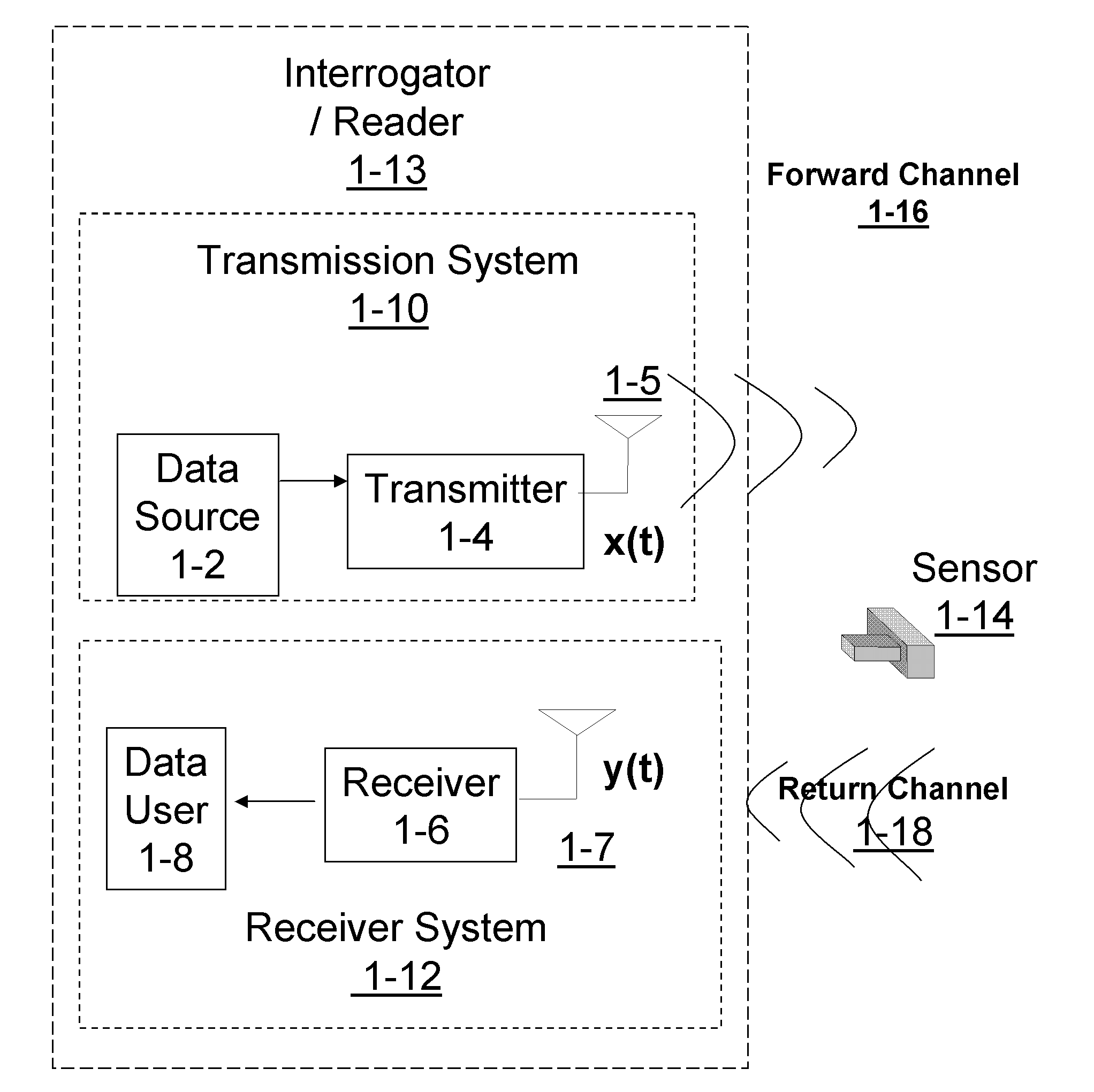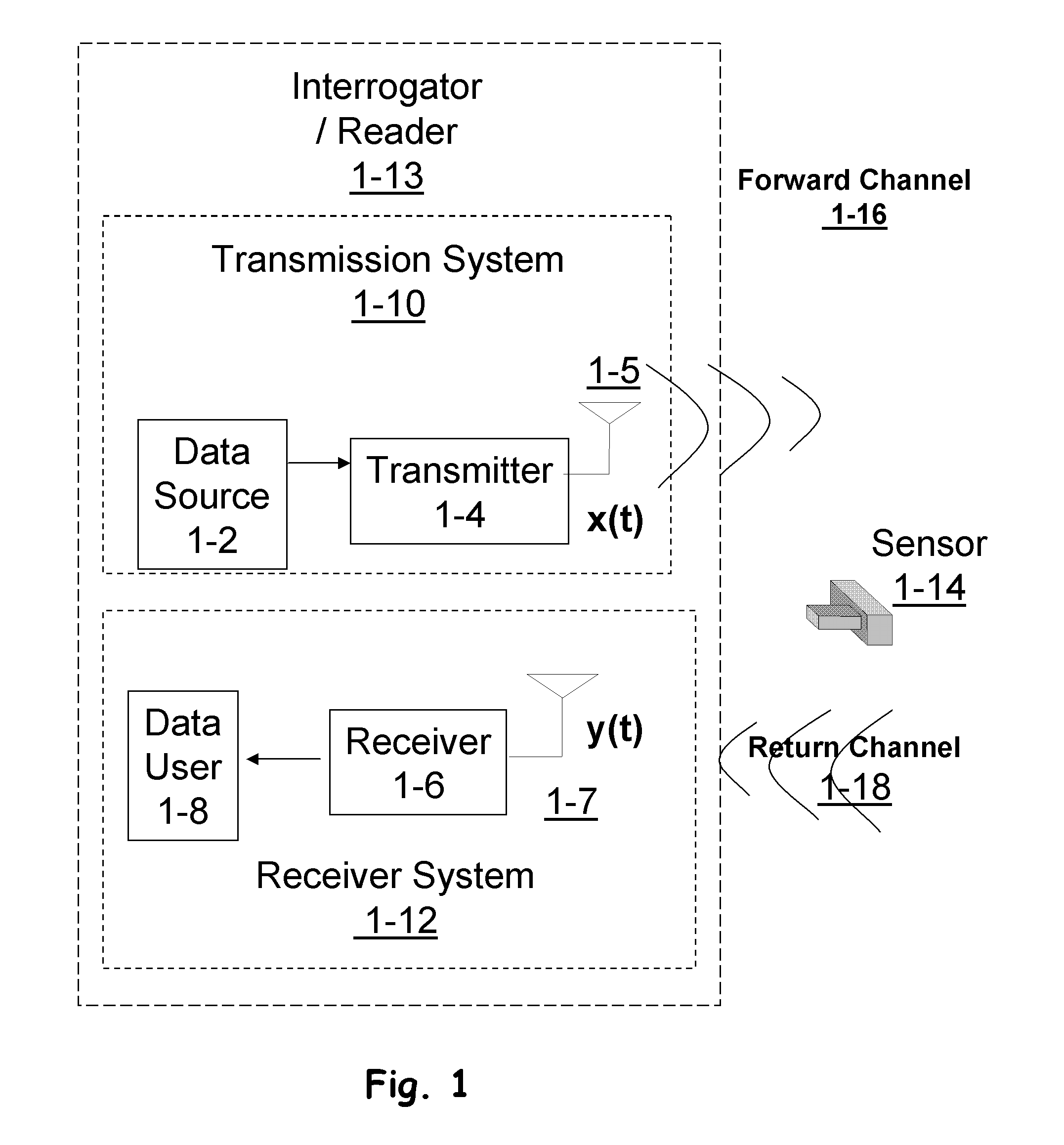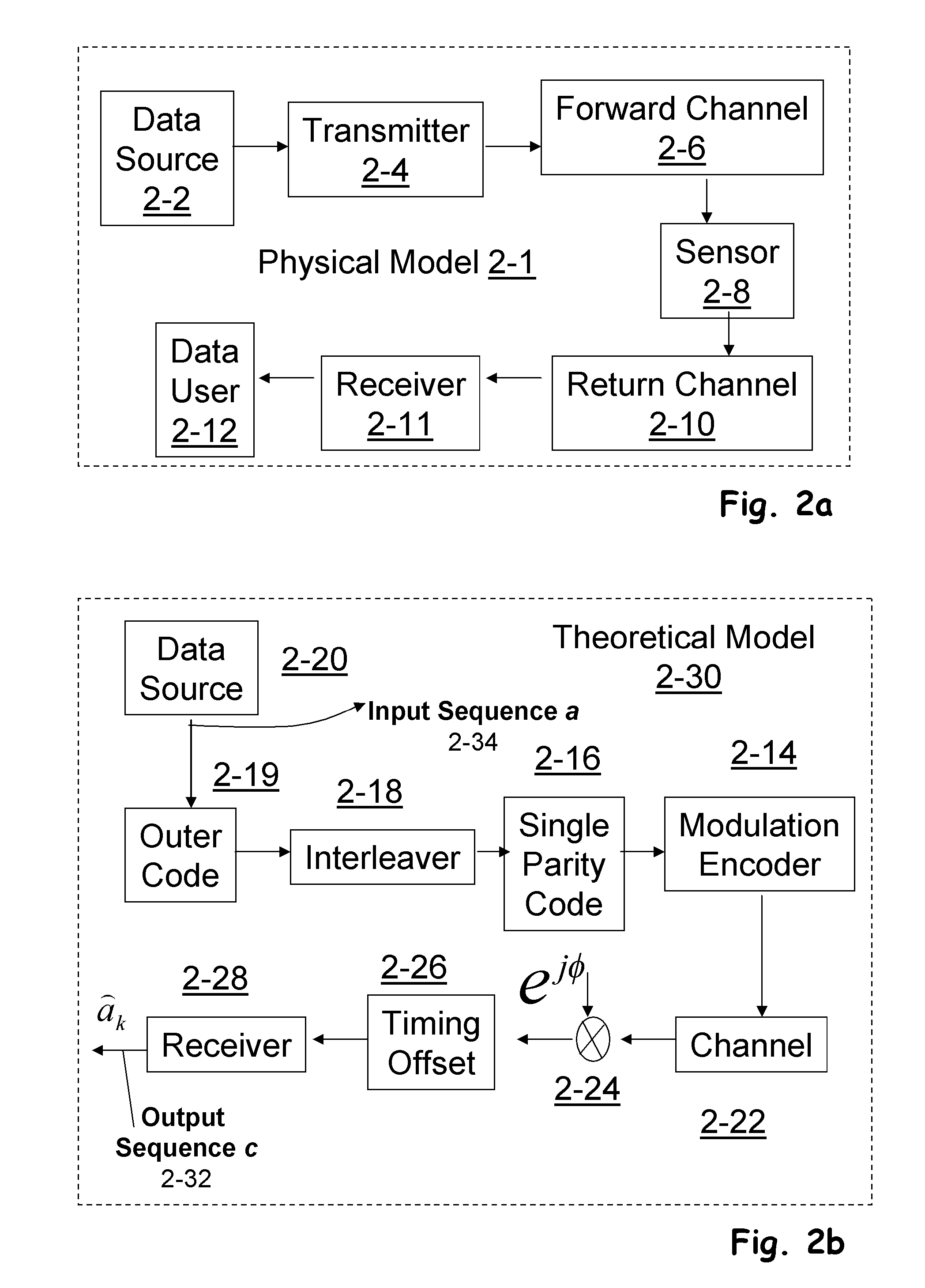RFID receiver
a receiver and receiver technology, applied in the field of transmitters and receiver systems, can solve the problems of high interference from other signals, low signal to noise ratio, and inability to detect signals in difficult environments
- Summary
- Abstract
- Description
- Claims
- Application Information
AI Technical Summary
Problems solved by technology
Method used
Image
Examples
Embodiment Construction
[0047]Receiver subsystems may provide enhanced detection of signals where some latency may be tolerated, particularly for use in sensory networks and passive Radio Frequency Identification (RFID) based systems. Such systems may use iterative processing techniques with soft-input-soft-output (SISO) components to combine channel decoding with equalization, demodulation, phase tracking, symbol timing and synchronization and interference cancellation. This is achieved with exchange of probabilities or “soft information” or equivalently the probability of correct detection of transmitted symbols based on the observed vector, at any given state of a finite state machine (FSM) which models the observation space. The evolution of FSM in time domain results into a planar graph referred to here as the “Trellis”. In the presence of additive white Gaussian noise (AWGN) with random phase and timing, the performance of the receiver using SISO approaches that of an ideal coherent receiver. In the ...
PUM
 Login to View More
Login to View More Abstract
Description
Claims
Application Information
 Login to View More
Login to View More - R&D
- Intellectual Property
- Life Sciences
- Materials
- Tech Scout
- Unparalleled Data Quality
- Higher Quality Content
- 60% Fewer Hallucinations
Browse by: Latest US Patents, China's latest patents, Technical Efficacy Thesaurus, Application Domain, Technology Topic, Popular Technical Reports.
© 2025 PatSnap. All rights reserved.Legal|Privacy policy|Modern Slavery Act Transparency Statement|Sitemap|About US| Contact US: help@patsnap.com



